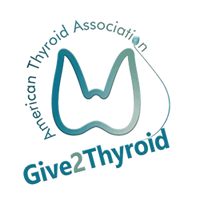BACKGROUND
Hyperthyroidism is a state when the thyroid is overactive and there is too much thyroid hormone in the body. The main cause of hyperthyroidism in the United States is Graves’ disease. This is an autoimmune disease where the body makes an antibody that attacks and turns on the thyroid. There are 3 major options for treatment of hyperthyroidism: 1) antithyroid drugs, such as methimazole or PTU, that decrease the thyroid hormone production; 2) surgery to remove the overactive thyroid and 3) radioactive iodine that is taken up by the thyroid and destroys the gland. The most common result of surgery and radioactive iodine therapy is hypothyroidism. Hypothyroidism can also develop if the dose of antithyroid drug is too high.
Thyroid hormone has major effects on the heart. Hyperthyroidism can cause major problems and symptoms such as irregular heart rhythms and palpitations. Rarely, these problems can lead to death. Despite treatment, the negative effects related to hyperthyroidism may persist. This study examined the effect of radioactive iodine therapy and surgery on heart disease related problems, hospitalizations and mortality.
THE FULL ARTICLE TITLE:
Essi et al 2018 Cardiovascular morbidity and mortality after treatment of hyperthyroidism with either radioactive iodine or thyroidectomy. Thyroid 28:1111–1120. Epub 2018 Jul 23.
SUMMARY OF THE STUDY
Two groups of patients who had been treated for hyperthyroidism in Finland from 1986 to 2007 were identified from a registry. Patients were treated either with surgery or with radioactive iodine therapy. A control group of Finnish residents was formed by randomly selecting 3 age and sex-matched subjects for each patient from a national population registry. A nationwide database system was used to identify causes of all heart related hospitalizations and death.




